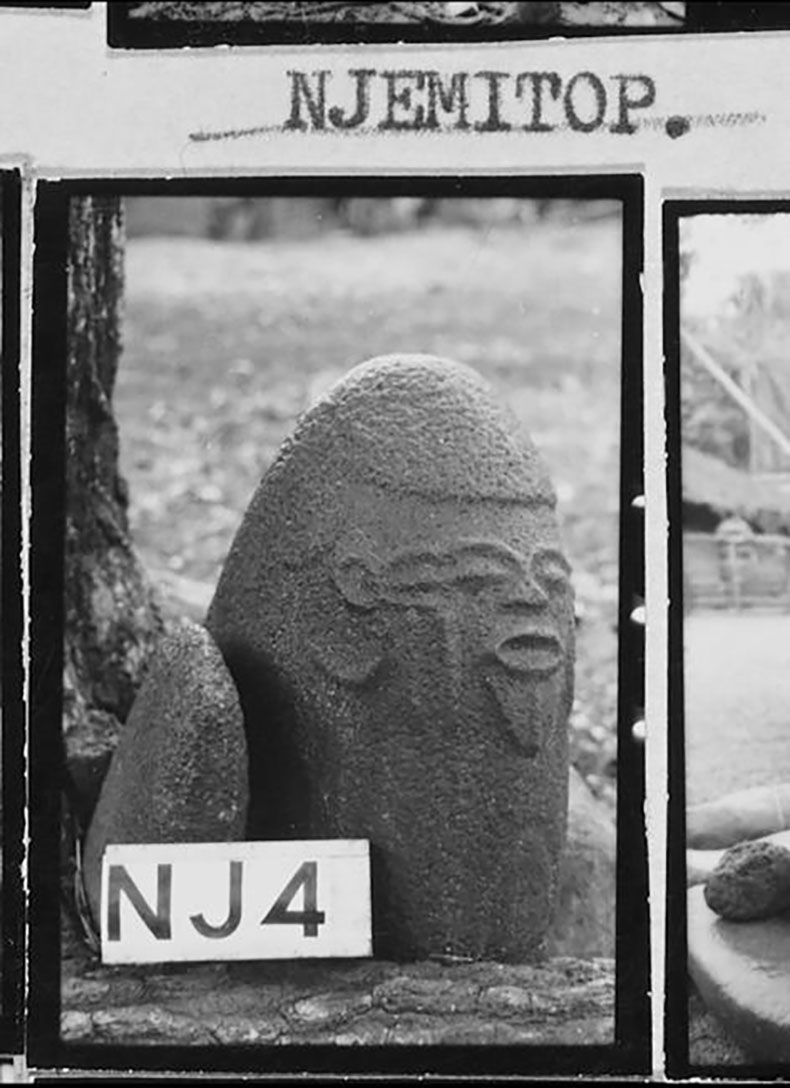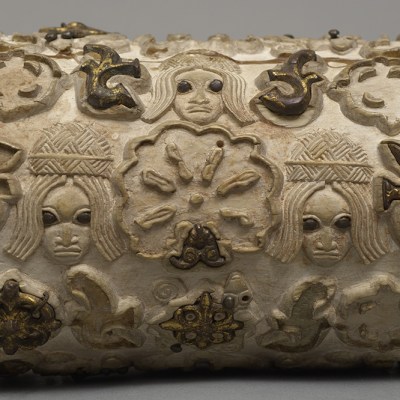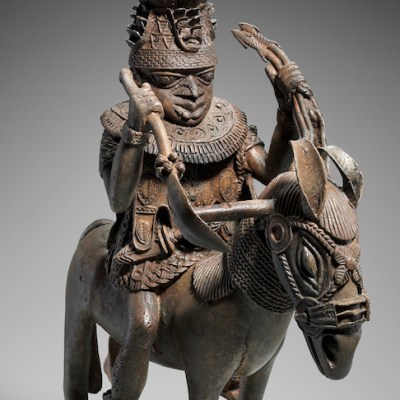On 23 June, officials from the Chrysler Museum of Art in Norfolk, Virginia travelled to Washington, D.C. with a carved basalt stone depicting a face and delivered it to the Nigerian embassy. The stone is a Bakor monolith, unique to a once densely-forested region of south-eastern Nigeria. In the early 1960s, Nigeria’s Department of Antiquities counted some 300 Bakor monoliths dotted around villages and forests, close to the Cameroonian border. The monoliths are typically decorated with elaborate patterns believed to be an ancient form of writing, as well as portrayals of human faces, which represent important ancestors. Many are as tall as a person, although the Chrsyler’s – some 40cm high – is a comparatively modest example. The Bakor monoliths are believed to be around 500 years old, although that’s a tentative guess.
Chrysler Museum director Erik Neil shakes hand with Uzoma Emenike, the Nigerian Ambassador to the United States, on the occasion of the return of a Bakor monolith in Washington, D.C. Photo: Ferdinand Saumarez Smith

Like many of Nigeria’s great cultural objects, the Bakor monoliths have been plundered. Ferdinand Saumarez Smith of the Factum Foundation, has been working since 2016 to preserve these monoliths; he estimates that about one third are now scattered around the world. Unlike the Benin Bronzes, these were not looted in the punitive British expedition of 1897, but have disappeared since Nigerian independence in 1960 – typically smuggled into Cameroon and then on to the European art market. In 2012, a couple from Virginia gave the Chrysler Museum its monolith. They had bought it for €4,200 at Christie’s in Paris in 2005. The evidence of its theft is incontrovertible; a photograph from the early 1960s shows the monolith in situ, standing under a tree in the village of Njemetop. ‘It had likely been looted in the Biafran war [of the late 1960s],’ says the Chrysler’s director Erik Neil. When the museum learnt more about the object, he explains, ‘we had no desire to hold on to something that has been stolen […] We have clear procedures that anything that is illegally obtained is returned to its rightful owner.’
A photograph showing the Bakor monolith, later given to the Chrysler Museum, standing in the village of Njemetop in Nigeria in the early 1960s. Courtesy National Commission for Museums and Monuments (NCMM)

The Chrysler joins a growing list of Western museums that have given stolen treasures back to Africa. But what makes this moment unusual is what the museum received, if not in return for, but as a result of, its act of restitution. Saumarez Smith flew to Washington, D.C. for the handover ceremony, carrying what appears to be a perfect replica of the Chrysler monolith, made by the Factum Foundation using a 3D printer. (This facsimile, however, is made of resin rather than stone and is considerably lighter.) At the request of the National Commission for Museums and Monuments (NCMM) in Nigeria, he presented the replica monolith to the Chrysler, who will display it in an exhibition about looting and restitution.
Factum, with the support of the Carène Foundation in Switzerland, has offered to produce a facsimile for any other museum or collector willing to return looted Bakor monoliths. ‘This is potentially a model for how museums can handle restitution,’ says Saumarez Smith. ‘We hope the Chrysler is the first of many.’ The Musée du Quai Branly in Paris, for example, has a Bakor monolith that elders in the village of Etinghi Nta believe was stolen from them in the 1970s. Factum has provided the village with a facsimile, but hopes to convince the Quai Branly to return the original.
An original Bakor monolith in Agba, Nigeria. Photo: courtesy Factum Foundation

But what will happen to Bakor monoliths that go back to Nigeria? Their cultural significance has weakened over time and the 30 sites where they are still to be found are in a variety of conditions. Some such locations are still forested but others have been subsumed by farmland, and monoliths have been damaged by fire from slash-and-burn clearances. Two sites are, at least in theory, protected by law as national monuments, and are walled-off. ‘The best way to display them is open-air, as they were centuries ago,’ says an official at the NCMM, ‘but the fear is people who want to take them illegally.’ The NCMM is now working with Factum on a submission for these sites to become UNESCO World Heritage status.


